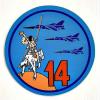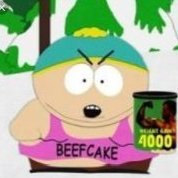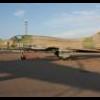-
Posts
258 -
Joined
-
Last visited
About nsmekanik

- Birthday 31/08/1960
Contact Methods
-
Website URL
http://
-
ICQ
0
Profile Information
-
Gender
Male
-
Location
Nanton Ab canada
Recent Profile Visitors
2,444 profile views
nsmekanik's Achievements

Established Member (3/9)
298
Reputation
-

Airfix Hawker Hurricane Mk.I Has Passed on!
nsmekanik replied to dogsbody's topic in Work in Progress - Aircraft
Certainly looks like an earlier version then mine of the 150 to me, I picked mine up in the late 90's. and came in a wooden case with three needle/tip combinations, 2 different paint pots and the cup. Whats interesting is how the needle lock nut is designed differently from the later models. If I were to hazard a guess I'd say that the "L" on the regulator was for Large, if your airbrush came with only 2 medium needles, one being the spare, I doubt that would be correct. This is a 100 but the internals are the same as the 150. A couple of things to watch for, Badger would have you change the seal between the head and body every time you remove the head, I don't. I just use bee's wax to help keep things sealed up, it looks though that Badger has replaced type of seal with a rubber Oring. The next thing is the needle bearing, those 2 white tubes below the body, when this wears out your airbrush will tend to spit paint, Badger would have you send them your airbrush for a tune up which is a bit pricey, but there is hope. First it's a good idea to keep the needle lubricated, I use The Regdab needle juice, this will help extend the lifespan of the needle bearing and help keep things sealed up. Once the thing needs replacing you have a couple of options, you can send it in, you can buy the tool and do it your self, you can send it to me cuase I bought the tool, or you can save a few bucks and do this (which did ok but using the tool worked better) Simply push the old one from the back of the body out the front, then push the new one in the front until it seats, and then push the needle in and wiggle it around until it moves freely......there are youtube videos if you do a search. -

Airfix Hawker Hurricane Mk.I Has Passed on!
nsmekanik replied to dogsbody's topic in Work in Progress - Aircraft
Lookin good Chris, nice to see you picking this up. Badger lists their tips as Fine, Medium and Large, when you are changing needles around be sure you also change the tips to match otherwise the performance of the airbrush may suffer and this may very well be why the first attempt didn't go very well. I never thought about that until you mentioned that you didn't know what size the needles were. If you look at the butt end of the needles you'll see groves cut into them, 1 groove is Fine, 2 is medium, and 3 Large. The spray regulator, at the end of the head assembly, should have an F,M,or L stamped on it to identify the tip size. -
I think the seepage may be more a case of the paint getting wicked in where the tape hasn't or can't get a good grip on the paint then just leaking. You'd probably end up with the same issue with enamels as the acrylics which would be even more difficult to clean up. Burnishing the edges helps alot but then the coarser the surface the less surface to stick to, and semi gloss is still a bit coarse, add to that thin wet paint and the results are in. I'm just suggesting that you would get a better result if you glossed before masking, burnished down the edge of the tape, and then misted in a couple of light coats to "seal the deal", although not the easiest thing to do with an aerosol I realize. I hope this helps you out. You do some amazing work and it's always a pleasure to see. Edit: I just realized you probably brushed on the black, in that case you could brush a thin clear around the edge of the tape, although doing that might add a bit to the ridge of paint I think it still be a bit better then trying to clean up the edges.
-
Lovely job Tony 👍, if I may suggest I don't think it's so much the Tamiya tape as it's low tack on Matt that may be the problem (Please forgive me if I'm wrong). This is a problem easily avoided with an airbrush by simply spraying over the edge of the tape, but not so much if one is using a hairy stick or aerosol, in which case it may be an idea to gloss coat the first color before masking it, and then burnishing the edges of the tape down with a toothpick or other such similar item. Just a thought.
-
The trick to vinyl masks is a hair dryer. A little heat makes a big difference in how they perform.
- 394 replies
-
- 4
-

-

-
- French Air Force
- 1940
-
(and 1 more)
Tagged with:
-
never mind, had an oppsie moment
-

Heather's Workbench - The Netherlands, 1940
nsmekanik replied to Heather Kay's topic in Work in Progress - Aircraft
Lovely work Heather I can vouch for the Pasche H as well, being cheap, robust, easy to maintain and does a good job. The problem I had with it was it's size, I prefer something a bit more dainty, I did use a Badger 155 for quite a while but now I've found my comfort zone with the Badger 100's and a Sotar 2020, medium, fine and extra fine as I'm to lazy to change needles. When choosing an airbrush one way to look at it is that it's a hairy stick with out the hair, and a hairy stick is just a glorified pencil, so how you hold your pencil will help you decide on a longer or shorter body airbrush. Another thing is that most 'dual action' airbrushes are not truly dual actions, as a true dual action means that you adjust both the paint and airflow with the trigger, whereas most airbrushes you can only adjust the paint flow, with the amount of airflow being externally adjusted, as with a Mac valve. Paint splatter can be a sign of either paint not being mixed properly with the thinner, the paint not thinned enough and/or the air pressure is to low. Mind you I have a couple of tins of WEM's paints that won't spray no matter how I do things while the rest are fine. The Rule of thumb is to thin the paint till you think it's to thin, then thin it some more. a general rule of thumb I have is 3:1 thinner to paint ratio to start with, then add either paint or thinner as required from there, I never ever load up my cup and spray right onto the model, instead I have kind of a base matte in my booth that I use to paint on and tweak things with, but I do mix my paints in the cup, adding the thinner with a dropper then using a flat tooth pic I add drops of paint then spin it to mix the paint, after which, using a Qtip to plug then end of the nozzle, I bow air back into the cup at very low pressure. Not necessarily a recommended procedure and perilous when it come to fine needles (in which case I just press my fingernail onto the desk top, stick the tip of the needle in between and give it a spin or 2 till it's straight again) but it works for me. My general working Pressure is somewhere between 15-20 psi, lower for finer work Over time, if you stick with it, you'll find it's like baking, in the beginning there is the measure of this and a measure of that, but after a period it becomes a pinch of this and a dash of that as there really is a fair amount of leeway in the mixes. For clean up I just use either lacquer thinner or 70% IPA depending on the type of paint (lacquer thinner with Vallejo believe it or not), a dropper and a Qtip, first I flush out the remaining paint if there is any, then I add a few drops of the cleaner, dip a Qtip in it then scrub out the cup, next I pull the needle and wipe it off with a Qtip dipped in cleaner. I also like to flush out the tip with a dropper of cleaner then wipe out the cup with a Qtip, after which I reinsert the needle. I find it advisable to pull the needle and clean it each time as it's best to clean the shaft while the paint is still wet if there is any that ends up there, or it's use a pair of pliers to force-ably remove it at a latter point. My model building habits were formed at an early age with small bottles and paint brushes so I like to paint as I go more or less, rather then save things up for one big session, so while all the above may seem a bit complicated and time consuming but it is really quite quick and dirty, I can fix a boo boo in under 5 minutes. But like most everything in this hobby there is truly no right or wrong way, just what works and doesn't.........more or less. Enjoying your threads as always -

Academy's 1/72 Hawker Typhoon
nsmekanik replied to nsmekanik's topic in Ready for Inspection - Aircraft
Thanks all for the feed back, I really do appreciate it -
I built this one eons ago and really enjoyed it, I originally painted it with Polyscale acrylics and used the kit decals. Unfortunately it lost one of the landing gear during a move so it sat on the shelf as 'ole peg leg for many years, however a little while ago I thought I'd see if somebody had a spare landing gear and, amazingly enough, someone did. With that, and lookin at how it was showing it's age I decided to give it an update with some new paint and decals. Things didn't go as well as I'd hoped, suffering from some broken bits and a bit of a disaster cleaning the rear canopy. Despite the few setbacks I managed to finish it up and I'm quite pleased with the results. Finished with Mr.Hobby paints and a combination of Brengun and Airfix decals. And here's how things started out
- 7 replies
-
- 23
-

-

-

Airfix 1/72 Beaufighter X - fairings on the upper wing
nsmekanik replied to Simon's topic in Aircraft WWII
Everybody sux at building models at some point Chris, looks like you got enough of those old crap kits to last a life time so, Mr. Rivet counter, dig one out and start slathering some glue and paint on it. Oh, and don't forget the obligatory finger print on the canopy while you are at it...... -

Heather's Workbench - Belgium, 1940
nsmekanik replied to Heather Kay's topic in Work in Progress - Aircraft
That's absolutely marvelous, I'd say your skills are shinning through with this one. -
I was experimenting with various aluminum paints and a fine brush, but honestly I find it to bright for my taste so now I'm trying out silver a pencil on a Typhoon I'm wor
-
Thanks all, much appreciated
-
I used SuperScale Decal's 72-830, 61st & 63 FS/56th FG, which only had enough stencils for 1 plane so I didn't use any. Despite all the nigglies I quite happy with how they turned out.
- 12 replies
-
- 25
-

-

Hawker aircraft 1940 to 1980 in 1/72
nsmekanik replied to CT Modeller's topic in Ready for Inspection - Aircraft
That is some lovely work on older kits, thanks for sharing those.



(510x640)-Copy(95x120).thumb.jpg.33073138e01aa81779639a845926753e.jpg)





